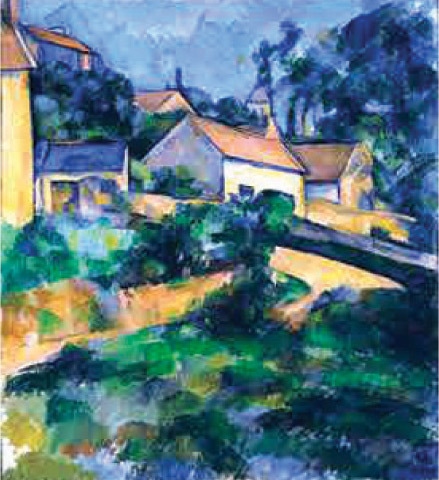Given the extremely rigid and perplexing times the city is going through these days because of restrictions on moving around, linked with Covid-19, the Marmottan Museum in Paris has taken a daring step. It has organised an unusual exhibition by putting works by the legendary 19th century French painter Paul Cezanne together with masterpieces of many, many Italian artists.
Through a fairly inventive technique, the first part of the exhibition displays Cezanne’s own paintings, while the chef d’oeuvres of ancient Italian geniuses who had inspired him are shown on facing walls. These 16th to 18th century wizards include Tintoretto, Jacopo Bassano, El Greco, Luca Giordano and many others.
The second part of the show contains works by the later generations of Italian painters who were themselves inspired by Cezanne’s creations and methodology. His influence had given birth to the Novecento movement first in Italy, then in entire Europe, led by painters such as Umberto Boccioni, Giorgio Morandi and Carlo Carrà, to name only a few.

This unprecedented extravaganza in the Marmottan Museum includes canvases borrowed not only from the Louvre and the Musée d’Orsay in Paris, but also from foreign museums such as the National Gallery of Art in Washington, Thyssen-Bornemisza in Madrid and the Walker Art Gallery in Liverpool, among many others. The number of private contributors from Canada, Switzerland, Germany, Scotland, Japan and, of course, Italy, rises up to no less than 50 works.
The exhibition’s title, Italian Dream, meticulously refers to the fact that, though a passionate reader of classical Roman poets such as Cicero, Virgil, Ovid and Lucretius, and a tireless painter influenced by Italian history and culture, Cézanne could never visit during his lifetime the land of his fantasies.
The Marmottan Museum in Paris pays homage to Paul Cezanne in an unusual exhibition
His reinterpretations of classical Italian paintings, such as El Greco’s ‘Lady in Ermine’, just to take one example, cannot be called copies. Cezanne’s own clearly discernible techniques simply attempted to capture the spirit of the original masterpieces by giving them his personal interpretations. ‘Portrait Of Antonio da Ponte’ by Jacopo Bassano, and the canvases with violent themes executed earlier in his career, such as ‘The Murder’ — inspired by Tintoretto’s ‘Deportation Of Christ’ — demonstrate the same tributary approach with purely original imagination.

Born in 1839 in a middle-class family of the sunny southern city of Aix-en-Provence, Cézanne was sent to Paris, while still in his teens, for higher studies — a project he would instantly abandon following his encounters with painter Camille Pissarro and writer Emile Zola, who would both recognise his talent and encourage him to continue painting.
While already a celebrity by his early 30s but much perturbed by the collapse of the Second Empire and the resulting unrest in Paris, Cezanne moved back to Aix-en-Provence, living and working there the rest of his life. His attachment with the hilly countryside would bring him closer to peasants working on the farms, and practically all his paintings thenceforward would be dedicated to scenes under a blue and sunny sky.

Cezanne’s other fixation became the passing time. He continued painting self-portraits and those of his wife Hortense, as well as of his children and other members of the family and friends, in order to illustrate how people’s appearances change as the years roll by. His self-portrait ‘Man In Black Hat’ is one such example.
Cezanne’s fascination with hilly panoramas and other natural surroundings kept him close to peasants and farms all his life, and a number of art historians would define his works, rightly or wrongly, as illustrations of the class conflict following the Second French Revolution.
By the time he died in 1906, at the age of 67 in his city of birth, he had finished more than 1,000 paintings with as many as 160 portraits.
“Cezanne & the Masters, An Italian Dream” is being exhibited at Marmottan Museum in Paris from February 27, 2020 to January 3, 2021
The writer is an art critic based in Paris. ZafMasud@gmail.com
Published in Dawn, EOS, November 29th, 2020

















































Dear visitor, the comments section is undergoing an overhaul and will return soon.